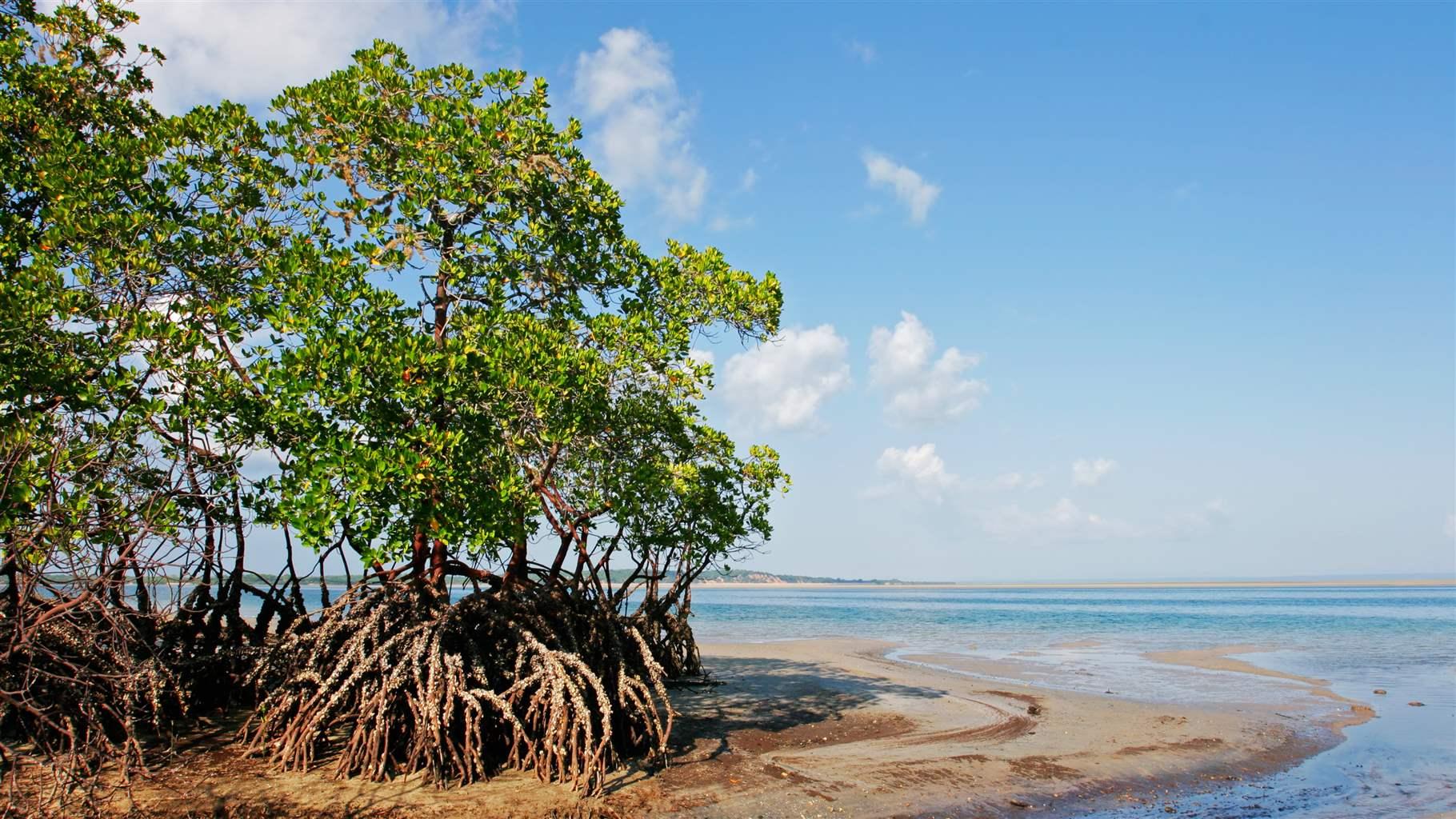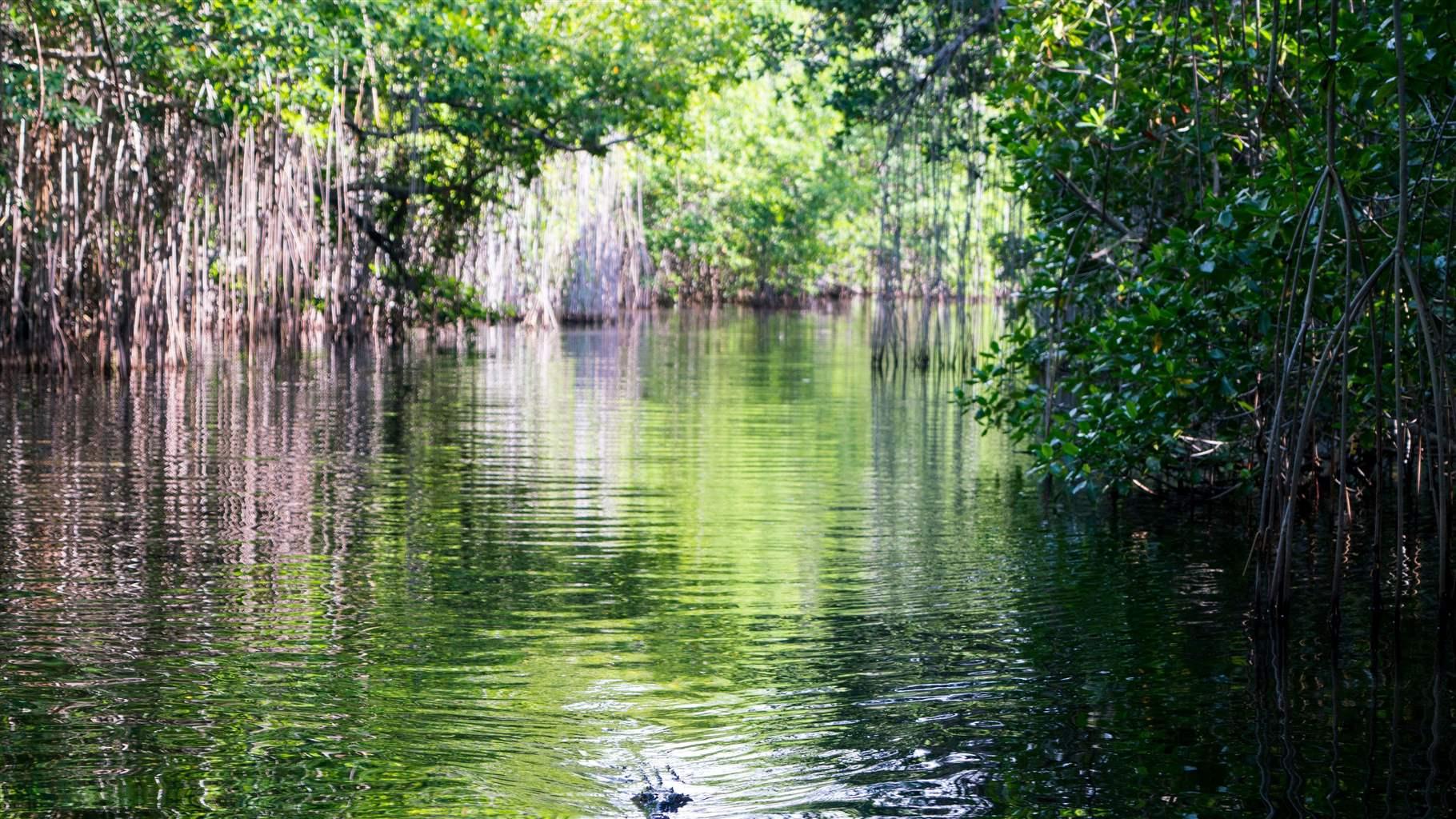Climate Benefits of Coastal Wetlands and Coral Reefs Show Why They Merit Protection Now
Conservation of these ecosystems is a cost-effective climate adaptation option for countries

Climate change is driving dramatic changes in weather patterns, which threatens communities around the world and ecosystems that once seemed far from harm’s way. As a recent report by the United Nations Intergovernmental Panel on Climate Change states, governments worldwide must take immediate action to reduce global emissions if humanity hopes to limit future warming and spare ourselves the worst-case scenario.
One proven way to combat rising temperatures and store carbon is through protecting and restoring coastal wetlands—namely mangroves, salt marshes, and seagrasses. Although these ecosystems make up less than 5% of the total land area on Earth and less than 2% of the ocean, they store about 50% of all carbon known to be buried in ocean sediments.
Healthy coastal wetlands also help people adapt to climate change. For example, mangroves can provide up to $5 of benefits for every $1 spent in restoration and protection by safeguarding communities against storm surge, improving water quality, and serving as habitat that helps improve fisheries.
Here’s a summary of those and other climate adaptation benefits of coastal wetlands and coral reefs:
- Protecting communities from flooding. Mangroves provide flooding protection for more than 15 million people living in coastal communities worldwide and help avert $65 billion in related losses every year. Salt marshes convey similar flood protection. For example, experts anticipate that a $20 million salt marsh restoration project in Nova Scotia, Canada, will substantially reduce the number of flooding events, protecting important world heritage sites, tens of thousands of community members, and 20,000 acres of agricultural lands.
- Buffering against storm surge. As storms increase in frequency and magnitude due to climate change, coastal wetlands help buffer adjacent communities from storm surge and strong winds. A study by The Nature Conservancy and Wetlands International found that wetlands can reduce that height of storm surge by 5 to 50 centimeters (approximately 2 to 20 inches) for every kilometer of mangrove width. Research from Belize has shown that coral reefs—which are often found alongside seagrass beds and mangroves—can also help lower wave height and reduce storm surge. In fact, a study published in Nature Communications estimates that coral reefs lessen wave energy that would otherwise affect the shoreline by an average of 97%.
- Reducing loss of land due to erosion. Seagrasses, mangroves, and salt marshes all help reduce erosion along the shore and promote shoreline stability, particularly when faced with severe storms. This is a critical benefit for coastal communities dealing with increasingly strong and frequent storms as a result of climate change.
- Sustaining livelihoods. Coastal wetlands and coral reefs are critical habitats for a wide range of species, including many that are central to the human diet and the global economy. For example, 20% of the world’s largest fisheries depend on seagrass for habitat. These ecosystems are important to both large- and small-scale fisheries, wildlife tourism, and other businesses the world over.
Not only do coastal wetlands provide all these benefits, but they are also often more cost-effective than engineered solutions, such as constructing seawalls. For example, restoring and protecting mangroves can provide the same level of storm surge and sea-level rise protection as engineered solutions—at two to five times lower cost.
Given this wide range of economic, social, and biodiversity benefits, countries must move quickly to protect these ecosystems. One step governments can take now to protect and restore their coastal wetlands is to include them in their nationally determined contributions (NDCs) under the Paris Agreement. Over the past several years, countries such as Belize, Costa Rica, and Seychelles have done just that.
Governments must revise and submit their NDCs to the U.N. every five years, and their next deadline for doing so is 2025. As decision-makers around the world think about how to increase their climate ambitions, they should consider including or expanding protection of coastal wetlands to help their countries mitigate and adapt to the impacts of climate change before it is too late.
Kim Jensen works on The Pew Charitable Trusts’ protecting coastal wetlands and coral reefs project.








